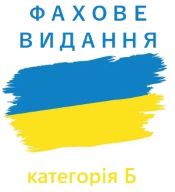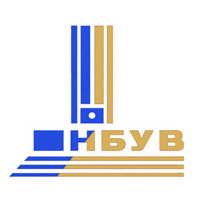Програмне забезпечення для поліпшення якості зображення при збільшенні його формату після зйомки
DOI:
https://doi.org/10.31498/2225-6733.47.2023.299972Ключові слова:
програмне забезпечення, растрові зображення, алгоритм, формат, колір, експериментальне дослідження, обробкаАнотація
У статті розглянуто цифрові зображення різних типів, а також види комп’ютерної графіки. Виявлено, що в растровій графіці базовим компонентом зображення є точка, в такому випадку у векторній графіці – лінія. Різноманітні векторні формати мають різноманітні колірні можливості. Основною перевагою є можливість масштабування їх без втрати якості, а також відносно незначний розмір файлів, що їх містять. Це спрощує передачу векторних зображень по електронних каналах зв'язку. Запропоновано конкретний алгоритм поліпшення растрових зображень, а саме з використанням квадратичного кореня значень кольорів й без використанням квадратичного кореня значень кольорів. Основним завданням було досягнення результату вдосконалення випадкового кольорового растрового зображення низької роздільної здатності без втрати якості та роздільної здатності. Ключовим моментом методу є порівняння та поєднання вертикальної, горизонтальної та діагональної інтерполяції, що дозволяє досягти кращої точності обчислення глибини кольору. Цей метод ніколи не використовувався в комерційному науковому програмному забезпеченні, хоча існують різні варіанти комбінованих методів інтерполяції, подібних до поточного. У цій статті було досліджено два різні підходи до повторного розрахунку матриці зображення під час уточнення зображення, а саме його збільшення, як квадратичне значення глибини кольору вплине на цільове значення кольору. Результати показують, що такий підхід дозволяє зберегти більше деталей у тінях і контури під час інтерполяції, хоча зображення дещо втрачає глибину кольору. Експеримент показує, що цей метод інтерполяції з квадратичним коренем значень кольорів дозволяє збільшувати та покращувати кольорові зображення зі складною структурою тональної кривої та зберігати деталі об’єктів на місці, хоча глибина кольору погіршується, особливо в найглибших відтінках і в чорному. Навпаки, метод комбінованої інтерполяції без підведення в квадрат дає значно кращий результат із кольоровою інтерполяцією, але втрачає деталі в темних областях початкового зображення. Запропонований метод може бути використано у різних сферах
Посилання
Grace K. Kennedy Image Processing with MATLAB. URL: https://matlabacademy.mathworks.com/details/image-processing-with-matlab/mlip/ (дата звернення: 20.02.2023).
Szeliski R. Computer Vision: Algorithms and Applications. Springer, 2022. 947 p. DOI: https://doi.org/10.1007/978-3-030-34372-9.
Gonsalez R., Woods R. Digital Image Processing. 3-d ed. New Jersey : Pearson, 2008. 954 p.
Remote Sensing. Bundesamt für Kartographie und Geodäsie. URL: https://learn.opengeoedu.de/en/fernerkundung/vorlesung/Remote%20Sensing/grundlagen_teil2 (дата звернення: 20.05.2023).
Chai L., Gharbi M., Shechtman E., Isola P., Zhang R. Any-resolution training for high-resolution image synthesis. European conference on computer vision (ECCV'22), Tel Aviv, Israel, 23-27 October 2022. Pp. 170-188. DOI: https://doi.org/10.48550/arXiv.2204.07156.
Heffelfinger D.R. Java EE 7 and GlassFish 4 Application Server. Birmingham : Packt Pub, 2014. 348 p.
Масштабування цифрових зображень. URL: http://ua.wikipedia.org/wiki/Інтерполяція (дата звернення: 18.10.2022).
Burger W., Burge M.J. Principles of Digital Image Processing: Core Algorithms. London : Springer, 2009. 344 p. DOI: https://doi.org/10.1007/978-1-84800-195-4.
Ferland M. Comparison of the human eye to a camera. Sciencing. URL: https://medium.com/photography-secrets/whats-the-difference-between-a-camera-and-a-human-eye-a006a795b09f (дата звернення: 10.05.2023).
Oliver K. How Our Eyes See Everything Upside Down. URL: https://www.mentalfloss.com/article/91177/how-our-eyes-see-everything-upside-down (дата звер-нення: 10.11.2022).
Controllable shadow generation using pixel height maps / Y. Sheng et al. European conference on computer vision (ECCV'22), Tel Aviv, Israel, 23-27 October 2022. Pp. 240-256. DOI: https://doi.org/10.48550/arXiv.2207.05385.
ChunkyGAN: real image inversion via segments / A. Šubrtová, D. Futschik, J. Čech, M. Lukáč, E. Shechtman, D. Sýkora. European conference on computer vision (ECCV'22), Tel Aviv, Israel, 23-27 October 2022. Pp. 189-204. DOI: https://doi.org/10.1007/978-3-031-20050-2_12.
Battiato S., Puglisi G., Impoco G. Vectorialisation of raster colour images. Conferenze Nazionale del Gruppo del Colore, Bologna, Italy, 13-14 Settembre 2012. Pp. 110-112.
Thyssen A. Resize and Scaling. Examples of ImageMagick Usage (Version 6), 2009. URL: http://www.imagemagick.org/Usage/resize (дата звернення: 15.11.2022).
Thyssen A. Resize and Scaling. Examples of ImageMagick Usage (Version 7), 2009 URL: http://www.imagemagick.org/Usage/resize (дата звернення: 15.11.2022).
Byrne E. Image Processing Onramp. MATLAB URL: https://matlabacademy.mathworks.com/details/image-processing-onramp/imageprocessing (дата звернення: 01.12.2022).
Milanfar P. Superresolution imaging. Boca Raton: CRC Press, 2011. 450 p.
Романюк О.Н., Обідник М.Д. Один із підходів до підвищення швидкодії зафарбування. Наукові праці Донецького національного технічного університету. 2011. Вип. 21(183). С. 116-121.
##submission.downloads##
Опубліковано
Як цитувати
Номер
Розділ
Ліцензія
Журнал "Вісник Приазовського державного технічного університету. Серія: Технічні науки" видається під ліцензією СС-BY (Ліцензія «Із зазначенням авторства»).
Дана ліцензія дозволяє поширювати, редагувати, поправляти і брати твір за основу для похідних навіть на комерційній основі із зазначенням авторства. Це найзручніша з усіх пропонованих ліцензій. Рекомендується для максимального поширення і використання неліцензійних матеріалів.
Автори, які публікуються в цьому журналі, погоджуються з наступними умовами:
1. Автори залишають за собою право на авторство своєї роботи та передають журналу право першої публікації цієї роботи на умовах ліцензії Creative Commons Attribution License, яка дозволяє іншим особам вільно розповсюджувати опубліковану роботу з обов'язковим посиланням на авторів оригінальної роботи та першу публікацію роботи в цьому журналі.
2. Автори мають право укладати самостійні додаткові угоди, які стосуються неексклюзивного поширення роботи в тому вигляді, в якому вона була опублікована цим журналом (наприклад, розміщувати роботу в електронному сховищі установи або публікувати у складі монографії), за умови збереження посилання на першу публікацію роботи в цьому журналі.









